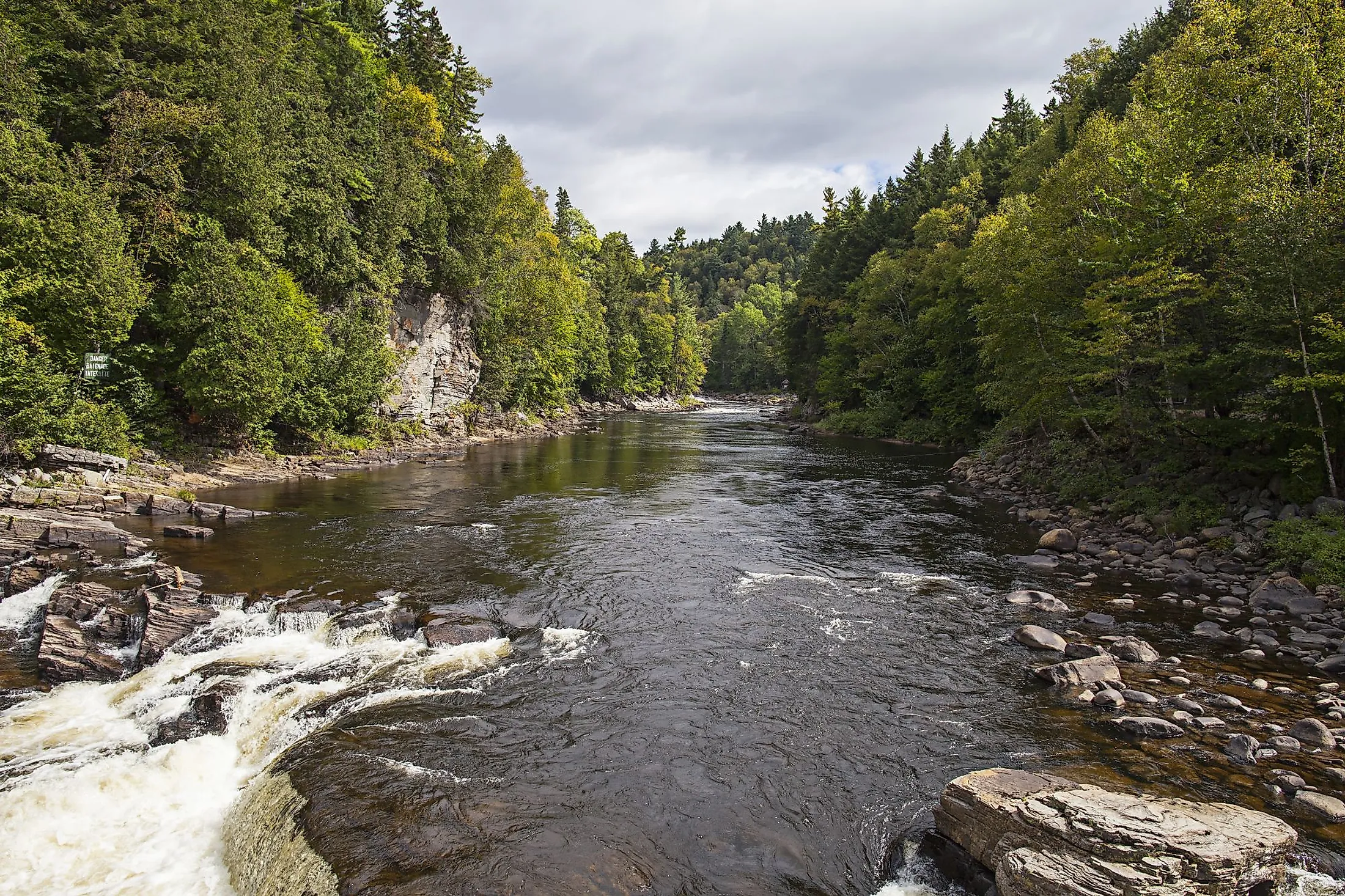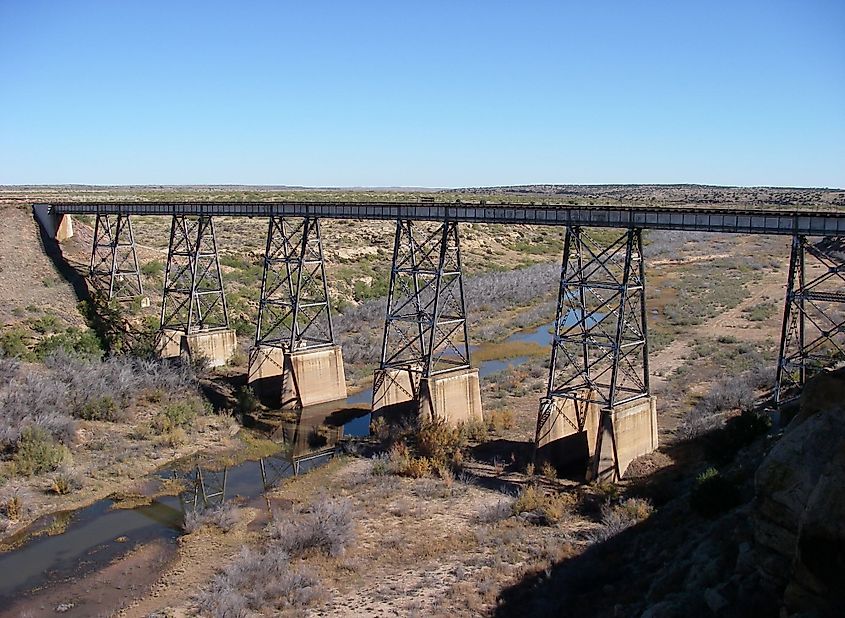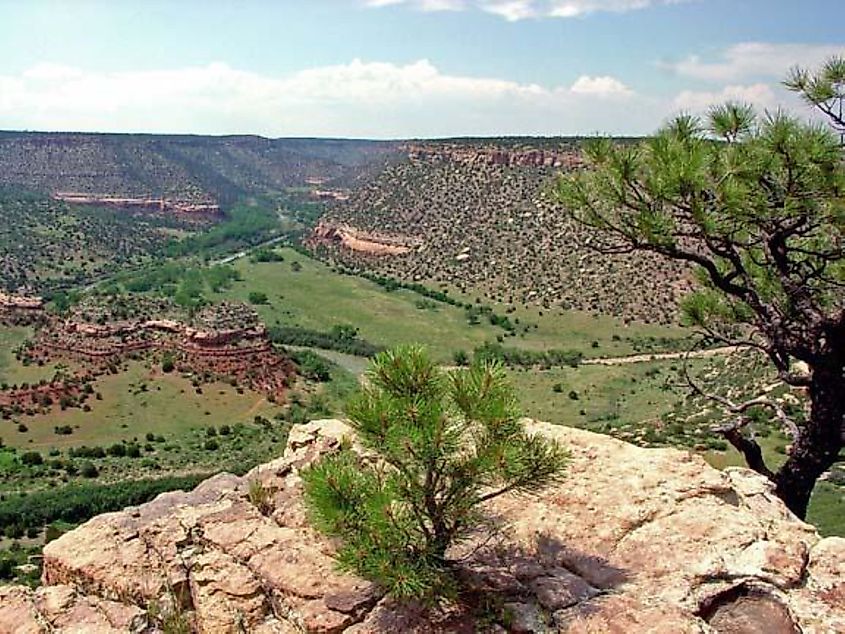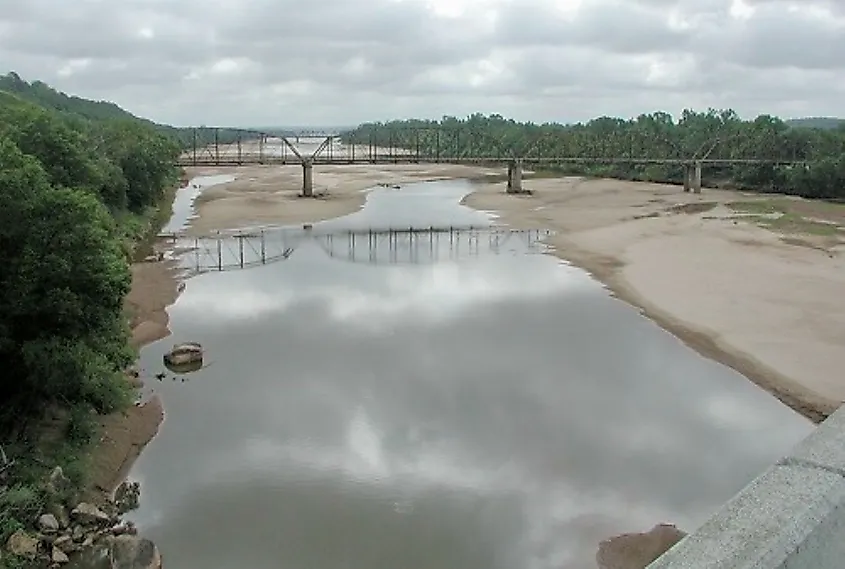
Canadian River
At 1,651 km long, the Canadian River is the largest of the Arkansas River's tributaries. Flowing through Colorado, New Mexico, Oklahoma, and the Texas Panhandle, the Canadian River has an impressive basin of over 123,220 sq. km. It is one of the United States' most beautiful freshwater rivers. The river passes along several features, including mountains, deep canyons, the Great Plains, and Llano Estacado, showcasing some of the most awe-worthy scenery in the southern states.
The Course Of The Canadian River

Perched at 2,900 m above sea level, the river’s course commences in the Sangre de Cristo Mountains of Colorado near the New Mexico border. The water source of the Canadian River’s flow comes from snowmelts off the Sangre de Cristo Mountains. Once plunging through the mountains, the river travels to New Mexico, going east southeast before heading south. Here, it forms a large canyon near Springer, New Mexico. The Sabinoso Wilderness makes up some of the canyon walls around the river before heading to Conchas Lake; the first destination it is dammed. Running eastward through the heart of the Great Plains, the Canadian River forms Ute Lake in another dammed location before entering the Texas Panhandle.
Exiting New Mexico, deep canyons are carved out along the way before establishing Lake Meredith from a dam. As the course continues, the glimpses of the Great Plains diminish, and the Llano Estacado or stakes plains become apparent. With the flow in Texas concluding, the river heads to Oklahoma, running south of the state capital Oklahoma City. In the city of Eufaula, the Canadian River flows into Lake Eufaula before draining into the Arkansas River, some 32 km away.
Geology Of The Canadian River

Throughout the flow of the Canadian River, red mud flats and areas of quicksand are present. From New Mexico and through the Texas Panhandle, features of sand beds are common, with an ever-changing course from storms and water fluctuations. As for the features of the canyons, these were formed about 2.6 million years ago when excess moisture put a strain on local waterways. The additional surge of energy saw the quick erosion of the river’s bed, thus creating deep carving canyons. Many of these canyons and mesas have underlying Permian rocks of dolomite, sandstone, siltstone, mudstone, and gypsum, giving it the red or white color in places.
History Around The Canadian River
The area around the Canadian River has been subjected to many explorations throughout its known existence. Among the first was the Spanish Governor, Juan de Onate, who explored the River from the west before settling in Oklahoma in 1601. The Spanish traders and hunters became more active along its course. Several French explorers investigated the River, with Bernard de la Harpe in 1715, Paul and Pierre Mallet in 1740, and Fabry de la Bruyere in 1741.
During the 19th century, many Native American Tribes conceded their land. The Quapaw tribe first gave up the land north of the Canadian River in 1818. Next came the Osage, who gave up all rights along the River in 1825. And subsequently, the river became a factor in reorganizing the border between the Creek-Seminole and Choctaw lands.
Around the 1850s, a military expedition led by Randolph B. Marcy scouted the riverside for a trail that would eventually be known as the California Road. The California Road ran north and south along the Canadian River's course and was significant to the California Gold Rush and the migration of settlers. When Oklahoma announced its intention to become a state in the 1890s, a section of the Canadian River constituted the state boundary.
Landscapes Throughout The Canadian River Course

From start to end, the Canadian River passes through a wide diversity of ecosystems. The mountains of Colorado contain dense pine forests and vast green meadows, which change to the tall grassland of the Great Plains and dune terraces and deeply carved canyons between New Mexico and Texas. This then transforms into gravel and sand bed flats throughout Texas. As the river heads through Oklahoma, glimpses of the various ecoregions can be seen with the sandhill stones and cross-timbers regions before the river finishes in an area of mesic land as it joins the Arkansas River.
Flora and Fauna Of The Canadian River
Past Amarillo, Texas, the banks around the Canadian River are typically used for ranching. While areas throughout Oklahoma house bison, elk, pronghorn deer, and black-tailed prairie dogs. The southern banks are a roosting spot for countless migratory bird species, with the least tern being among them. Various varieties of fish can be found near the confluence of Arkansas, which also contain the Arkansas shiner, a favored bait fish.










